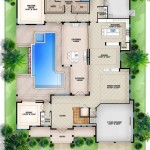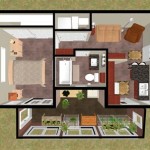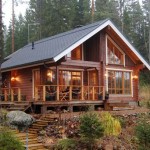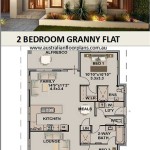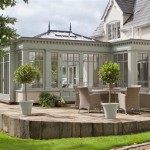Affordable house plans provide cost-effective blueprints for constructing homes that meet the needs and budgets of individuals and families. These plans are designed with an emphasis on affordability, incorporating sustainable materials and efficient construction techniques to minimize expenses. For instance, affordable house plans often feature smaller square footage, open-concept layouts, and energy-efficient appliances, allowing homeowners to save on building and operating costs while still enjoying a comfortable living space.
Building a home using affordable house plans offers numerous advantages. Not only does it reduce upfront construction expenses, but it can also lead to long-term savings on energy bills and maintenance costs. Additionally, affordable house plans often include flexible designs that can be customized to specific requirements and preferences, ensuring that homeowners obtain a home that aligns with their lifestyle and aspirations. In the following sections, we will delve into the details of affordable house plans, exploring their benefits, design principles, and practical considerations for building your dream home.
When considering affordable house plans, there are several key points to keep in mind:
- Cost-effective materials
- Energy efficiency
- Open floor plans
- Smaller square footage
- Customizable designs
- Long-term savings
- Sustainable construction
- Flexible layouts
- Reduced maintenance
- Increased affordability
By incorporating these elements into your building plans, you can create a beautiful and functional home that meets your needs without breaking the bank.
Cost-effective materials
When building an affordable home, it is essential to choose cost-effective materials that do not compromise quality or durability. Fortunately, there are numerous options available that can help you save money without sacrificing the integrity of your home.
One of the most important factors to consider is the material used for the exterior walls. Vinyl siding is a popular choice for affordable homes because it is relatively inexpensive, easy to install, and requires minimal maintenance. It is also available in a variety of colors and styles, so you can find one that complements your home’s design. Another option for exterior walls is fiber cement siding, which is more durable than vinyl and can withstand extreme weather conditions. While it is more expensive than vinyl, it can last for up to 50 years, making it a more cost-effective option in the long run.
For the roof, asphalt shingles are the most affordable option. They are durable, easy to install, and come in a variety of colors and styles. Metal roofing is a more expensive option, but it can last for up to 50 years and is more resistant to fire and wind damage. If you live in an area with extreme weather conditions, metal roofing may be a more cost-effective option in the long run.
When choosing windows and doors, look for energy-efficient models that will help you save money on heating and cooling costs. Vinyl windows are a good option for affordable homes because they are relatively inexpensive and energy-efficient. Wood windows are more expensive, but they are more durable and can last for up to 50 years.
By choosing cost-effective materials, you can build an affordable home that is both beautiful and durable. With careful planning and research, you can find materials that meet your needs and budget.
Paragraph after details
In addition to the materials listed above, there are a number of other ways to save money on building materials. One way is to buy in bulk. If you are building a large home, you may be able to get a discount by purchasing all of your materials from the same supplier. Another way to save money is to look for recycled materials. Recycled materials are often less expensive than new materials, and they can be just as durable.
Energy efficiency
Energy efficiency is one of the most important considerations when building an affordable home. By incorporating energy-efficient features into your home, you can save money on your energy bills and reduce your environmental impact.
- **Insulation:** Insulation is one of the most effective ways to improve the energy efficiency of your home. It helps to keep your home warm in the winter and cool in the summer, reducing the amount of energy you need to heat and cool your home.
- **Windows and doors:** Windows and doors are another important source of heat loss in a home. By choosing energy-efficient windows and doors, you can reduce the amount of heat that escapes from your home.
- **Appliances:** The appliances you choose for your home can also have a significant impact on your energy consumption. By choosing energy-efficient appliances, you can save money on your energy bills and reduce your environmental impact.
- **Lighting:** Lighting is another area where you can save energy. By using energy-efficient light bulbs, you can reduce your energy consumption and save money on your energy bills.
By incorporating these energy-efficient features into your home, you can save money on your energy bills and reduce your environmental impact. With careful planning and research, you can find energy-efficient features that meet your needs and budget.
Open floor plans
Open floor plans are a popular feature in affordable homes. They can help to create a more spacious and inviting living space, while also reducing the cost of construction. Here are a few of the benefits of open floor plans:
- More spacious and inviting: Open floor plans create a more spacious and inviting living space. By removing walls between the kitchen, dining room, and living room, you can create a more open and airy space that is perfect for entertaining guests or spending time with family.
- Reduced cost of construction: Open floor plans can also help to reduce the cost of construction. By eliminating walls, you can save on materials and labor costs.
- More natural light: Open floor plans allow for more natural light to enter the home. This can help to reduce your energy costs and create a more cheerful and inviting living space.
- More flexibility: Open floor plans offer more flexibility than traditional floor plans. This allows you to customize your home to meet your specific needs and preferences.
If you are considering building an affordable home, an open floor plan is a great option to consider. Open floor plans can help you to create a more spacious, inviting, and cost-effective home.
Smaller square footage
One of the most effective ways to reduce the cost of building a home is to reduce the square footage. A smaller home will require less materials and labor to build, and it will also be less expensive to heat and cool.
- Lower construction costs: The cost of building a home is directly related to the square footage. A smaller home will require less materials and labor to build, which can save you thousands of dollars.
- Lower energy costs: A smaller home will also be less expensive to heat and cool. This is because it will have less space to heat and cool, and it will also be more energy-efficient.
- Easier to maintain: A smaller home will also be easier to maintain. There will be less space to clean and maintain, and it will be easier to keep the home in good repair.
- More affordable: A smaller home will be more affordable than a larger home. This is because it will cost less to build, heat, and cool, and it will also be easier to maintain.
If you are considering building an affordable home, reducing the square footage is a great way to save money. A smaller home will be less expensive to build, heat, cool, and maintain, and it will be just as comfortable and inviting as a larger home.
Customizable designs
One of the great things about affordable house plans is that they are often customizable. This means that you can tailor the plan to meet your specific needs and preferences. Here are a few of the benefits of customizable house plans:
- Create a home that is unique to you: With a customizable house plan, you can create a home that is truly unique to you. You can choose the features and finishes that you want, and you can even change the layout of the home to better suit your needs.
- Get the most out of your space: A customizable house plan allows you to make the most of your space. You can choose a plan that is designed to maximize the square footage, and you can even add on additional rooms or features as needed.
- Save money on construction: By customizing your house plan, you can save money on construction costs. You can choose features and finishes that are within your budget, and you can even eliminate features that you don’t need.
- Increase the value of your home: A customizable house plan can increase the value of your home. By adding features and finishes that are popular with buyers, you can make your home more appealing to potential buyers and increase its resale value.
If you are considering building an affordable home, a customizable house plan is a great option to consider. Customizable house plans allow you to create a home that is unique to you, get the most out of your space, save money on construction costs, and increase the value of your home.
Long-term savings
In addition to the upfront savings you can enjoy by building an affordable home, you can also benefit from long-term savings. Here are a few of the ways that affordable house plans can help you save money over the long term:
- Lower energy costs: Affordable house plans often incorporate energy-efficient features that can help you save money on your energy bills. These features may include things like insulation, energy-efficient windows and doors, and energy-efficient appliances.
- Lower maintenance costs: Affordable house plans are often designed with low-maintenance materials and finishes. This means that you will spend less money on maintenance and repairs over the long term.
- Increased durability: Affordable house plans are often built with durable materials and construction methods. This means that your home will be more likely to withstand the elements and last for many years to come.
- Higher resale value: Affordable house plans can actually increase the resale value of your home. This is because affordable homes are in high demand, and buyers are willing to pay a premium for homes that are well-built and energy-efficient.
By building an affordable home, you can enjoy significant long-term savings. You will save money on your energy bills, maintenance costs, and repairs. You will also enjoy the peace of mind that comes with knowing that your home is built to last. And when it comes time to sell your home, you will be able to get a higher resale value.
Sustainable construction
Sustainable construction is a method of building that minimizes the negative impact on the environment and maximizes the use of sustainable resources. It involves the use of sustainable materials, energy-efficient design, and construction practices that promote the long-term durability of the building.
There are many benefits to building an affordable home using sustainable construction methods. These benefits include:
- Reduced environmental impact: Sustainable construction methods help to reduce the environmental impact of a home by minimizing the use of non-renewable resources, reducing pollution, and conserving water.
- Lower energy costs: Sustainable construction methods can help to reduce energy costs by incorporating energy-efficient features into the home.
- Improved indoor air quality: Sustainable construction methods can help to improve indoor air quality by using low-VOC materials and finishes.
- Increased durability: Sustainable construction methods can help to increase the durability of a home by using durable materials and construction practices.
- Higher resale value: Sustainable homes are in high demand, and buyers are willing to pay a premium for homes that are built using sustainable construction methods.
Flexible layouts
Flexible layouts are another important consideration when building an affordable home. A flexible layout allows you to change the layout of your home to meet your changing needs over time. This is especially important if you are planning to build a home that you will live in for many years.
- Open floor plans: Open floor plans are a great way to create a more flexible layout. Open floor plans allow you to create a more spacious and inviting living space, and they also make it easier to change the layout of your home over time.
- Multi-purpose rooms: Multi-purpose rooms are another great way to create a more flexible layout. Multi-purpose rooms can be used for a variety of purposes, such as a guest room, home office, or playroom. This makes it easier to adapt your home to your changing needs.
- Movable walls: Movable walls are a great way to create a more flexible layout. Movable walls allow you to change the layout of your home without having to make any major renovations. This makes it easy to adapt your home to your changing needs.
- Built-in furniture: Built-in furniture is a great way to create a more flexible layout. Built-in furniture can be used to create a variety of different spaces, such as a home office, reading nook, or storage area. This makes it easy to adapt your home to your changing needs.
By incorporating flexible layouts into your affordable home plan, you can create a home that will meet your needs for many years to come. Flexible layouts allow you to change the layout of your home to meet your changing needs, and they also make it easier to adapt your home to your changing needs.
Reduced maintenance
Affordable house plans often incorporate low-maintenance materials and finishes. This means that you will spend less money on maintenance and repairs over the long term.
- Durable exterior materials: Affordable house plans often use durable exterior materials, such as vinyl siding or fiber cement siding. These materials are resistant to rot, pests, and fading, which means that they will require less maintenance over time.
- Low-maintenance landscaping: Affordable house plans often incorporate low-maintenance landscaping. This may include using native plants that are adapted to the local climate and require less water and fertilizer. It may also include using hardscaping materials, such as pavers or gravel, instead of grass, which requires less mowing and watering.
- Energy-efficient appliances: Affordable house plans often incorporate energy-efficient appliances. Energy-efficient appliances use less energy, which means that they will last longer and require less maintenance.
- Easy-to-clean finishes: Affordable house plans often use easy-to-clean finishes, such as tile or laminate flooring. These finishes are easy to clean and maintain, which means that you will spend less time and money on cleaning.
By incorporating low-maintenance materials and finishes into your affordable house plan, you can save money on maintenance and repairs over the long term. You will also have more time to enjoy your home and less time worrying about maintenance.
Increased affordability
Affordable house plans are designed to be affordable to build and maintain. This means that you can save money on the upfront cost of building your home, as well as on the ongoing costs of ownership.
- Lower construction costs: Affordable house plans are designed to be built using cost-effective materials and construction methods. This means that you can save money on the upfront cost of building your home.
- Lower energy costs: Affordable house plans often incorporate energy-efficient features, such as insulation, energy-efficient windows and doors, and energy-efficient appliances. This can help you save money on your energy bills over the long term.
- Lower maintenance costs: Affordable house plans often use durable materials and finishes that require less maintenance. This can help you save money on the ongoing costs of owning your home.
- Increased resale value: Affordable house plans can actually increase the resale value of your home. This is because affordable homes are in high demand, and buyers are willing to pay a premium for homes that are well-built and energy-efficient.
By building an affordable home, you can save money on the upfront cost of building your home, as well as on the ongoing costs of ownership. You will also enjoy the peace of mind that comes with knowing that your home is built to last and is energy-efficient.










Related Posts

